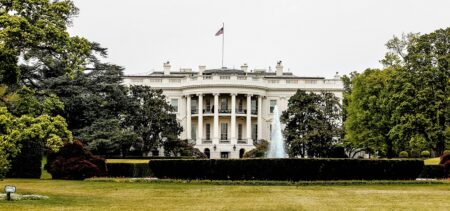The White House unveiled on Wednesday its final update to the Strategy for American Innovation¸ detailing how the Administration plans to work with American citizens and businesses to innovate and bring economic growth.
America has always depended on its capacity to innovate, and there have been plenty of important American innovations that helped shape the world we live in today. Probably because it’s such a culturally diverse country, there have always been plenty of ideas worth investing in.
President Obama said back in January, 2014: We know that the nation that goes all-in on innovation today will own the global economy tomorrow. This is an edge America cannot surrender.
President Obama’s Strategy for American Innovation seeks to harness the inherent ingenuity of the American people to ensure a rapid, broad-based, and sustained growth. Innovation-based economic growth should bring greater income, higher quality jobs, and improved health and quality of life to all U.S. citizens. The Strategy for American Innovation provides a multifaceted, commonsense, and sustained approach to ensuring America’s future prosperity.
The update in the Strategy for American Innovation provides an outline of the administration’s plans to support innovation through the $146 billion federal research and development funds.
According to the data presented in the initiative, last year U.S. businesses created jobs faster than at any time since the 1990s. The time for this innovation investment could not be any better. Economists have consistently found that innovation and technological change are the most important drivers of productivity growth and, in turn, long-run economic growth. To put the importance of productivity growth in perspective, the President’s Council of Economic Advisers recently calculated that if the United States had maintained the rapid pace of post-World War II productivity growth to the 1970s up to today, the average American household would have an additional $30,000 in income.
In the Strategy for American Innovation it is mentioned that in order to be impactful, innovations must also be scalable, not merely one-off novelties. The President’s Strategy for American Innovation focuses on two broad categories of innovation:
– Innovation to drive economic growth and address national priorities: New technologies, products, processes, and business models can drive economic growth, job creation, and increases in productivity. These innovations flow not only from the development of new technologies (e.g. cloud computing, the integration of IT with objects in the physical world through the “Internet of Things,” predictive data analytics, advanced materials, energy storage, lifesaving drugs), but also from novel applications of these technologies and new business models that create economic and societal value.
– Institutional and public-sector innovation: Historically, some of the most important innovations have been institutional innovations, such as the creation of the patent system, the agricultural extension service, the modern research university, and the peer-review system for supporting basic research. Institutional innovation and experimentation are needed both to improve the performance of the Federal Government and to create a better environment for innovation for the private sector and civil society. Examples of public-sector innovations include paying for results as opposed to paying for inputs; tapping the ingenuity of the American people to solve problems using incentive prizes; using a “test-validate-scale” approach to find and fund what works; and bringing entrepreneurs and world-class technical experts into the Federal Government to transform digital services for the American people.
Announced back in September, an important focus area will be the development of smart cities. More than $160 million will be committed for federal research on this matter.
“So no one knows for certain which industries will generate the jobs of the future. But we do know we want them here in America. We know that. And that’s why the third part of middle-class economics is all about building the most competitive economy anywhere, the place where businesses want to locate and hire,” said President Barack Obama, in January, 2015.
Private-sector investments in R&D are critical for long-term economic growth, job creation and productivity. According to the strategy, economists have found significant knowledge spillovers result from private R&D activity, meaning that any firm investing in the development of new knowledge will fail to capture the full benefits of that investment. In the 2016 Budget, the Administration proposes to make the credit more generous and available to a broader range of innovative firms, through an increased rate of the alternative simplified credit (ASC) from 14 to 18 percent and streamlined credit calculations that businesses must perform. In order to increase this pool of availability for firms, the credit will also be allowed to offset Alternative Minimum Tax liability to expand its availability to young research intensive firms, and there will also be a significant increase for collaborative research by allowing 75 percent of payments to nonprofits for research to be counted toward the credit.
The manufacturing of innovative technology is without a doubt one of the top priorities in the strategy. With a “National Network for Manufacturing Innovation” in development, and with discussions about a series of partnerships between other states, higher education institutes and private companies, innovative technology research and manufacturing is clearly one of the most important focus areas.
The Strategy for American Innovation also highlights investments in research for autonomous and connected vehicles, as well as the administration’s “ConnectED Initiative” – which should bring high-speed broadband to 99 percent of the country’s students by 2018.
If we think about all the issues that American citizens face every day, innovation is needed now more than ever. Health, climate change, economy, education and national security are just some of the areas that will benefit from innovation, and just a few improvements could start a cascade of advancements that will ultimately lead to a better life-quality.













































